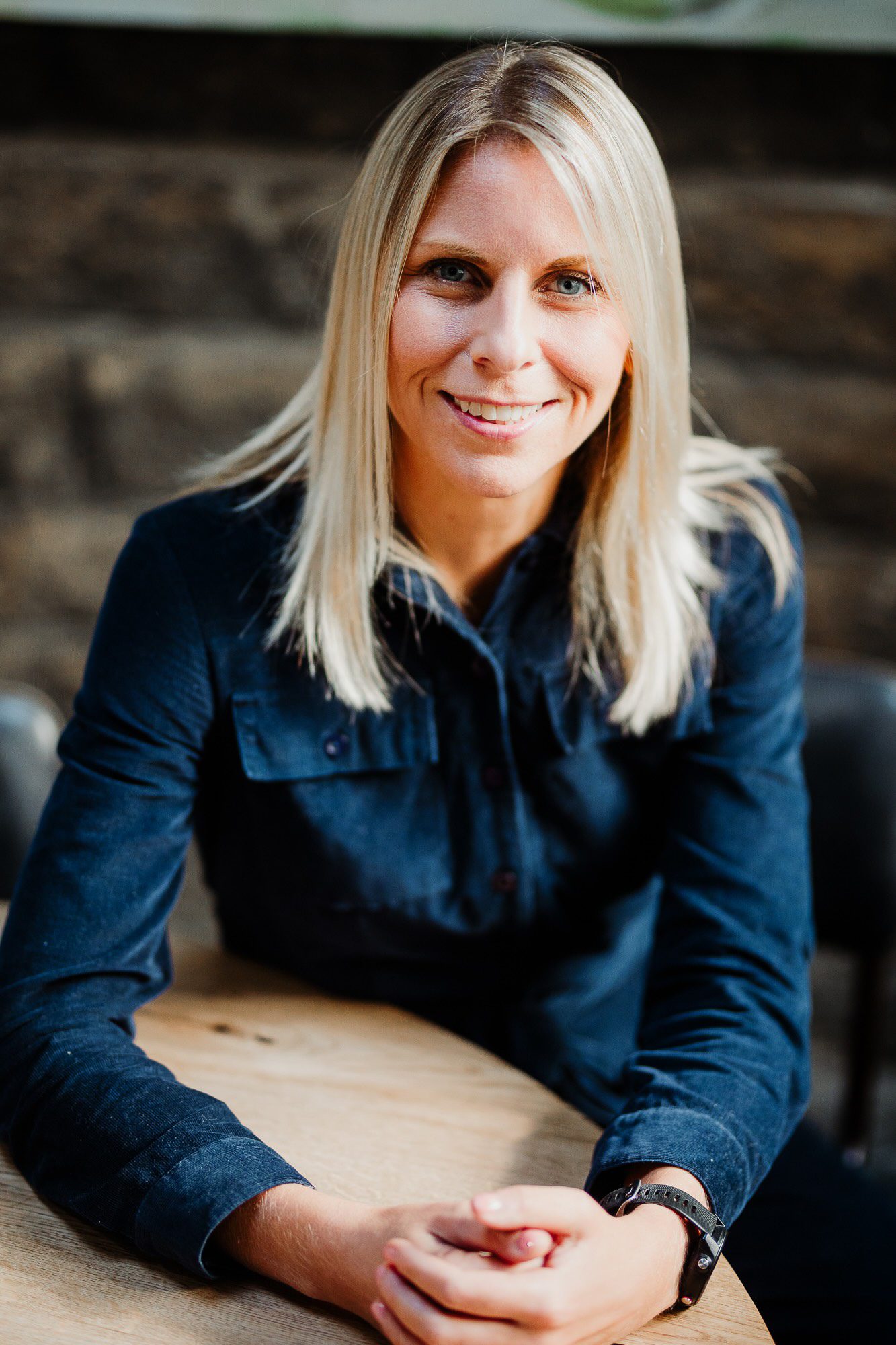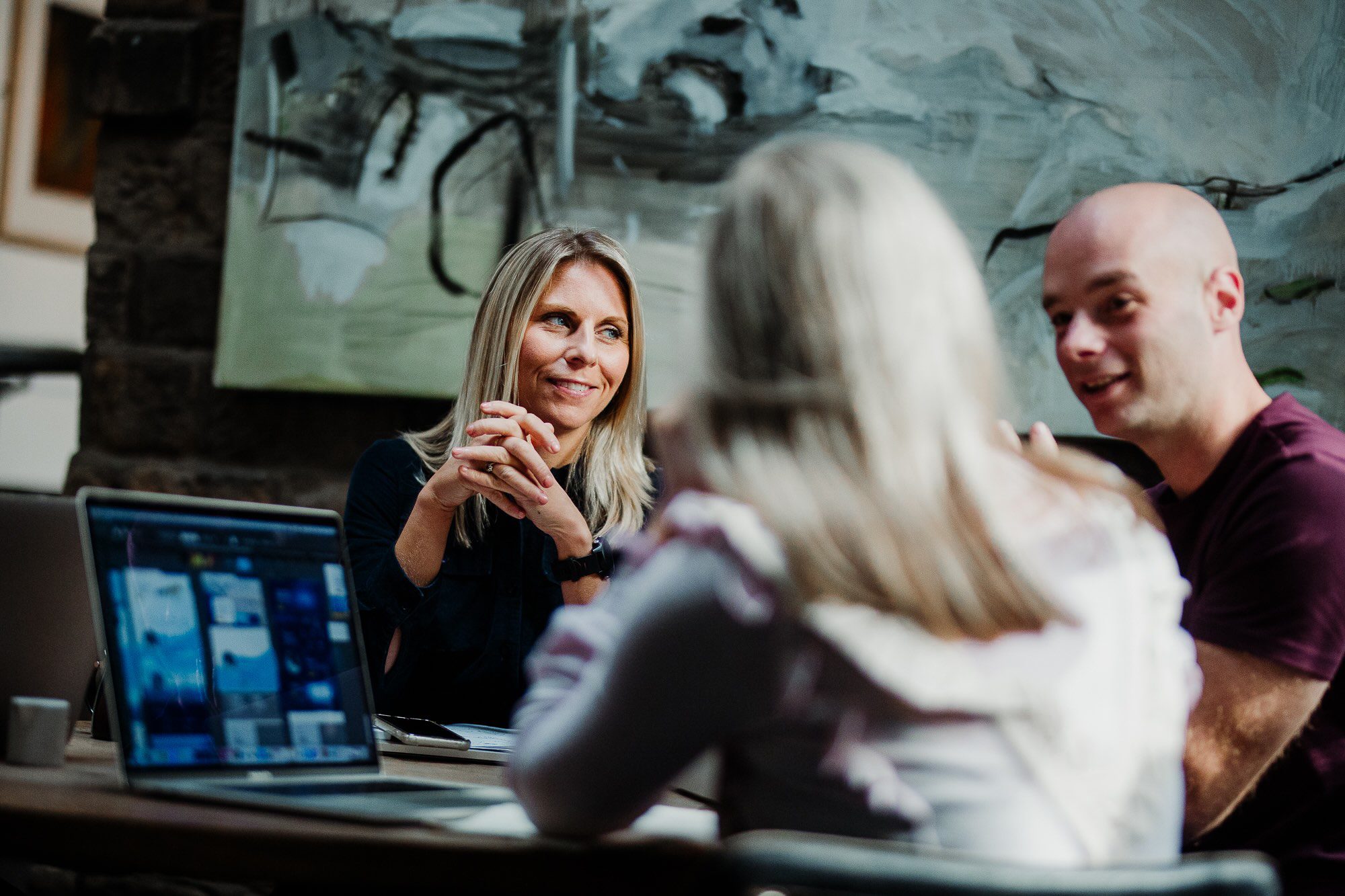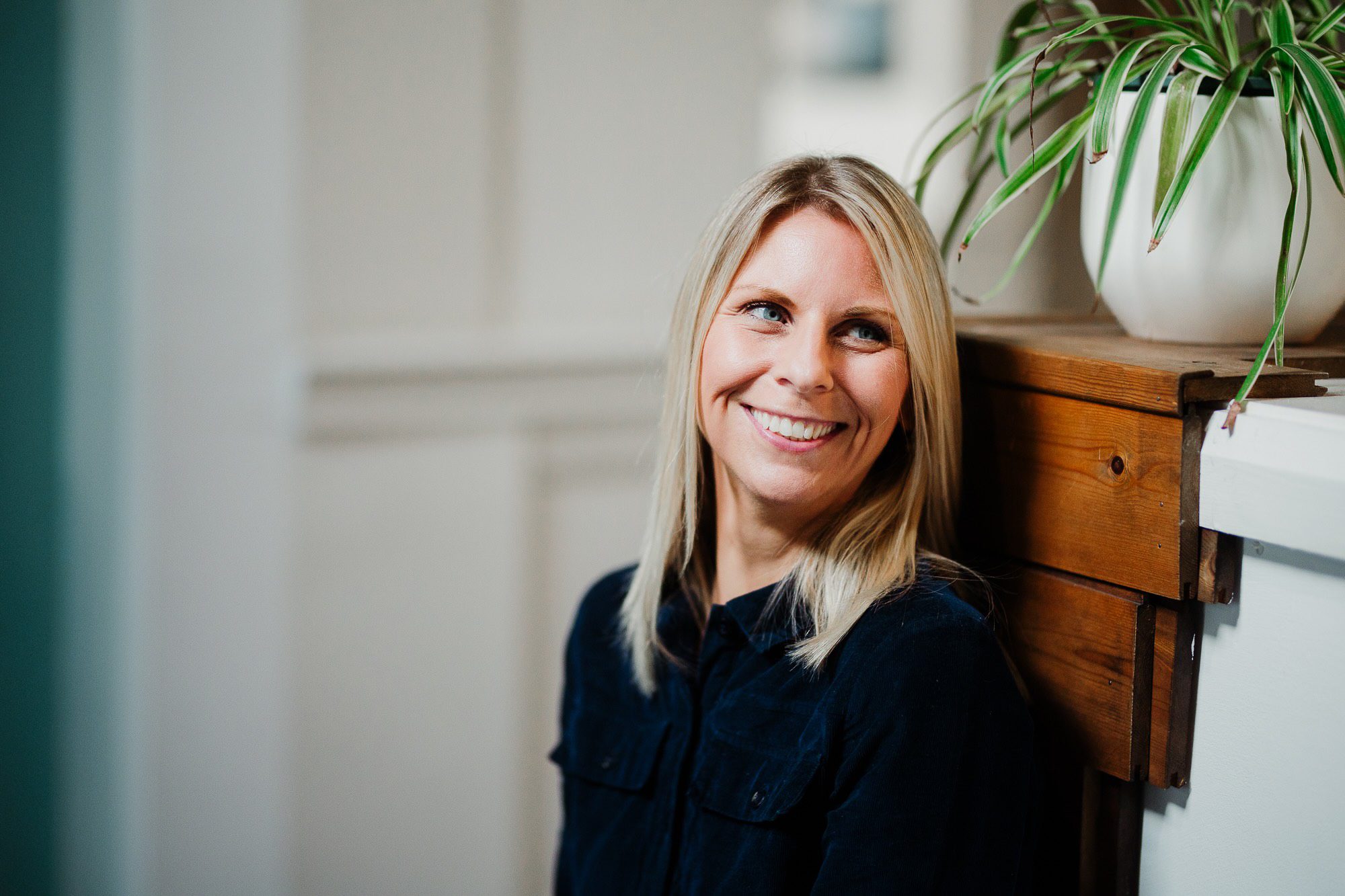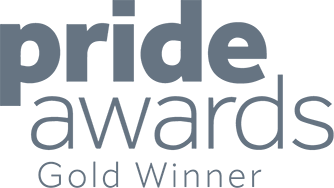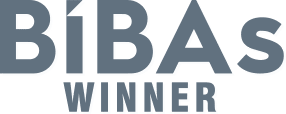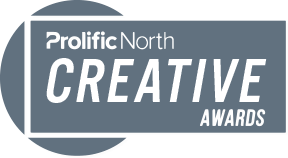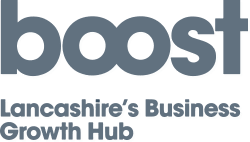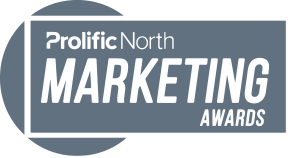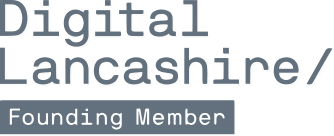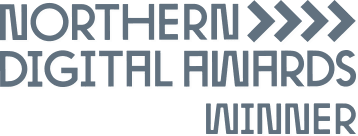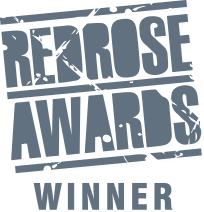Please introduce yourself, tell us what you do and, just for fun, as a child what did you want to be when you grew up?
I’m Julia Carefoot, Creative Lead at Hotfoot, with nearly 20 years of experience in the industry.
When I was little, I dreamed of being a racing car driver. Then I wanted to be a nurse because my mum said I had a caring nature. But as I grew older, my love for loud guitar music took over, and I decided I wanted to be a rock star—just like Courtney Love.
What inspired you to get into the creative industries – was there a lightbulb moment?
I remember my dad painting at home—he’s really into wildlife and landscapes. My late mum and my sister are creative too, but their focus was more on pattern, textiles, and fashion. We didn’t talk about art much as a family, but it was always there—something we did naturally, and I think it was quietly encouraged.
In primary school, I had a teacher called Miss Paul who really encouraged my best friend and me. She’d often let us stay in at break times to work on projects. Year 5 was such a creative year, and she championed us. Later, in high school, I won an art prize when I was about 15 or 16. I remember thinking, I must be relatively good at this, and it felt like a natural progression to keep studying.
I’ve always loved music. Back in the late ’80s and early ’90s, albums were everything. I’d spend hours devouring the music, obsessing over album and single artwork, reading footnotes, and memorising lyrics. That’s what first sparked my interest in graphic design and illustration—gig posters, album covers, and magazine layouts.
In my early 20s, I started following artists like Leia Bell, Vaughan Oliver at 4AD, Neville Brody at The Face, and Jason Munn from The Small Stakes. I used to visit the Richard Goodall Gallery in Manchester’s Northern Quarter and buy prints whenever I could.
So what happened next?
I started a Fine Art degree at Lancaster University, but I was having a classic early-20s existential crisis. I had no confidence and, more importantly, no idea who I was. An artist’s primary goal is to communicate, but I didn’t know what I wanted to say. I left at the end of my first year and worked a few bar and admin jobs before deciding to go back into education.
At the time, I was torn between Environmental Science and Graphic Design at UCLAN. I called the Environmental Science department first, but no one answered. When I tried the Graphic Design department, they picked up and invited me in for a chat—which, looking back, must have been my interview.
That’s a Sliding Doors moment…
Ha, totally! I had no idea it was one of the best courses in the country. I didn’t really know what graphic design was—I thought it was just about making things look nice. I was in for a shock.
The course taught me that graphic design is conceptual. Great designers solve problems and change behaviors. It’s ultimately about communication and storytelling, with the potential to offer real-world solutions. I studied with some incredibly talented people, many of whom have gone on to head up agencies around the world. Ren Rigby stood out at the time and still does amazing work today. I recommend any aspiring designer check out their work. You can find lots of their inspirational talks online.
Pretty early on, I realised I was drawn to creating work with meaning—work that delivers tangible outcomes. And that holds true today.
What was your first job like?
My first job as a designer was at a small agency Glorious Creative in Manchester’s Northern Quarter. The gap between university theory and real-world practice was huge. The work was a mix of conceptual design for brand and campaign projects, and then the bread-and-butter page layout stuff.
There’s also a big difference in pace. I had to learn how to present my work and sell ideas to peers, collaborators, and clients. Collaboration is so vital in this industry, but it often gets overlooked in studios. I also learned that managing people is tricky—it’s not something you’re taught; it’s learned on the job.
One key takeaway was that design is commercial art. Your work exists because someone commissions it. If you want full creative control, focus on becoming a fine artist, where it’s purely your vision.
How does that contrast with your role today?
It’s still about solving problems, whether it’s a full brand project or a campaign poster. I’m always asking, What are we trying to achieve? What’s the issue? What are we saying with this piece?
I’m not interested in design for its own sake. I want to create work with purpose—work that changes behaviour, delivers results, and has an impact. That’s always been my motivation, and it’s the same at Hotfoot.
What trends do you think are important?
The elephant in the room is AI. It’s already transforming my daily working practices. I’ve been using tools like Affinity and Adobe’s AI features, and they’ve definitely taken away some of the more repetitive, laborious aspects of my role. But, as a creative person, I do find it all a bit problematic. I can completely see how devastating the impact could be on illustrators and photographers.
We have to embrace AI and use it as a tool—because honestly, there’s no other choice—but we need to do so responsibly and ethically. I’m saying all this on the day of the Artificial Intelligence Action Summit in Paris, against a backdrop of tech leaders racing to accelerate AI into society as the supposed solution to our economic challenges… and, of course, the ever-growing influence of the Tech Bros.
What resources or people do you recommend that people should follow for inspiration?
The world around us—which might sound a bit cliché—but I think we often forget that in an increasingly digital age. Inspiration is everywhere if you’re paying attention.
Online, I turn to Creative Review, Behance, and Dribbble for ideas. I follow a lot of designers, but I’ve always admired Michael Johnson’s work at Johnson Banks because much of what they do has a strong social purpose. I’m also a big fan of Pentagram and Design Studio.
What advice would you have for new designers or people entering industry?
We’ve been working with design students at the University of Cumbria recently, and it’s restored my faith in young people. They’re full of enthusiasm and creativity. It reminds me of what John Lennon said: “If you don’t have artists, you don’t have society.”
So my advice is: Have courage in your convictions—there’s real value in that. As a society, we need people with ideas and vision. It’s vital.
In terms of a career in the creative industries, adaptability is key. Move with technology, be multidisciplinary, and promote yourself. There are so many platforms available now to get your work out there—don’t be shy.
For women entering the industry, I’d say find a mentor. There aren’t enough women in senior roles or leading agencies. Paula Scher is a great example, and closer to home, the Northern Design Festival is run by an inspiring group of intelligent women who are amplifying female voices.
What do you think is the best way to gain experience, because when somebody is new to the industry they don’t necessarily have a portfolio?
The portfolio is your calling card, so invest in it. In a previous role, I hired a designer who was working at Tesco during the day but spent evenings building his portfolio—creating speculative work and self-initiated projects. He’s now a senior UI designer in London.
If you’re struggling to write your own briefs, use sites like Briefbox for inspiration. Also, notice what’s around you. If you go to a gym and their logo is terrible, redesign it and show them. Self-initiated work is a great way to build a portfolio.
And don’t just show the finished work—include sketches and your process. Most agencies care far more about your ideas and creative thinking than where you studied.
What advice would you give to upcoming designers around dealing with negative feedback and building resilience?
At first it’s hard, but over time you do develop resilience. Getting your work critiqued can feel very personal, partly because every thing that you generate carries your imprint, a piece of your DNA, and that never diminishes, but over time you learn to compromise, and to adapt and ultimately we operate in a commercial world and we are here to deliver for our clients.
Working as part of a team because then your colleagues become a kind of support network. If you are a freelancer then perhaps try and create a virtual support network with other freelancers. They 100% will have experienced the same, so that definitely gives you peace of mind. It’s just a thing that happens in the industry.
Something I also do is I keep the originals. So even if a client requires a change, I still have my original work that I can use in my portfolio if I feel the end result have been compromised.
What do you do outside of work?
I write and record music and play drums in an indie band. Music is my other big passion, and I’m really happy to have that creative outlet.
I also love the outdoors—trail running and hill walking. Being immersed in nature is therapeutic for me. It’s like my “church.” When I’m struggling with something, the answers often reveal themselves in that space, with clarity and a renewed connection to my surroundings.
We started by asking what you wanted it to be when you grew up. What advice would you give to yourself if you could go back in time and speak to a young Julia?
I’d tell her: Just have confidence. Don’t worry about what other people think. Follow your own path. There’s nothing wrong with you—you are enough.
